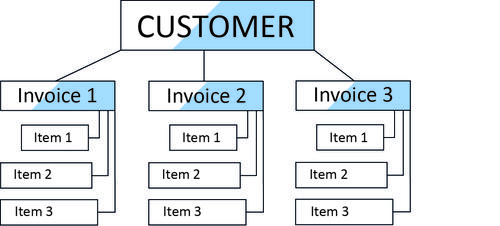Libelle IT Glossary Part 15: What is a database?
Can you imagine life without databases? Understandably, this is a question that very few people have ever thought of. After all, databases influence us indirectly at best and run ßusually in the background. In a world that thrives on industry, commerce, services or digitalization, however, databases often represent an elementary basis. In this blog post, we explain what exactly a database is, take a look at its history and at the different types of databases.
How the term "database" is defined
Definitions of databases are quite numerous. Most commonly, it refers to a system that allows users to store, organize, and manage information electronically. Often, this information is data records such as names, addresses, product numbers, or inventory levels. Among other things, companies use databases in order to make business decisions, hospitals manage patient data, and image databases are common in private use. Databases are usually located on servers or on local computers. Especially in times of accelerating digitization, databases are becoming increasingly relevant in the context of "Big Data".
The history of databases
How long have databases actually been around? The success story of these IT systems began in the 1960s. At that time, databases were still quite simple in structure. Databases were often used that worked hierarchically and with so-called "tree schemas". This means that data records are linked on various hierarchical levels and subdirectories. Especially with the advent of more digital technologies in the 1980s and the Internet boom in the 1990s and early 2000s, the demand for databases and the efficient storage and management of ever larger data sets continued to increase. Today, there are many different types of databases and the market of database vendors is evolving away from the former monopolistic position of single vendors such as Oracle towards more diversity especially with regard to open source (e.g. PostgreSQL.).

What types of databases are there?
Over the last 60 years or so, the range of databases has constantly been evolving. Different types and architectures of databases serve a variety of specific needs. Here is a small excerpt of the most important database types:
- Relational databases
The best known and most widely used type of database. Stores data in tables and is optimal for managing structured information. - Distributed databases
Storing data on multiple computers and distributed in multiple locations. - Object-oriented databases
Those who rely on object-oriented programming should use this type of database. - NoSQL databases
Particularly suitable for the management of Big Data. - Cloud databases
Access is via the Internet. A distinction is made here between storage in public, private or hybrid clouds.
Would you like to learn more about IT topics or terms? Then visit our Libelle IT glossary or find exciting additional articles in our blog. Follow us for news, updates and trends on LinkedIn.
Recommended article
All blog articles